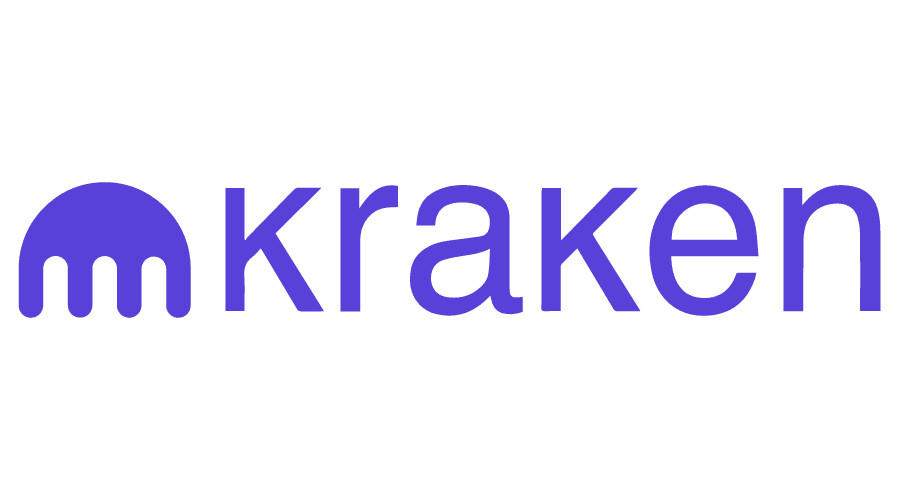Top 5 Cryptocurrency Exchanges of 2025: Complete Comparison Guide
- Comprehensive comparison of the top 5 cryptocurrency exchanges in 2025, including Crypto.com, Coinbase, Kraken, Binance.US, and Gemini, with detailed analysis of their features and fees
- Step-by-step guide for beginners to get started with cryptocurrency trading, covering account creation, identity verification, security measures, and making your first trade
- Overview of various trading options available on modern exchanges, including spot trading, margin trading, futures, options, staking, NFTs, and token launchpads
- Expert recommendations tailored to different user needs: Crypto.com for overall experience, Coinbase for beginners, Kraken for security, Binance.US for low fees, and Gemini for availability across all US states
Find your crypto broker

Since 2014, Financer has helped 433,686 people make better financial decisions.
Reviewed by 1 people
Reviewed by 3 people
Reviewed by 3 people
Reviewed by 61 people
Reviewed by 3 people
While we do our best to keep the data up to date, we can't guarantee the complete accuracy on a day-to-day
In the rapidly evolving world of cryptocurrency, choosing the right exchange is crucial for both novice and experienced traders.
These top exchanges have been carefully selected based on factors such as security protocols, fee structures, available cryptocurrencies, user experience, and regulatory compliance.
Each offers unique strengths, catering to different types of crypto enthusiasts, from newcomers to seasoned traders.
Remember, the crypto market is dynamic, and what constitutes the “best” exchange can vary based on individual preferences and market conditions. Stay tuned as we break down the critical aspects of each platform.
What are Cryptocurrency Exchanges?
Cryptocurrency exchanges are digital platforms that facilitate the buying, selling, and trading of various cryptocurrencies.
These platforms act as intermediaries between buyers and sellers, providing a marketplace where users can exchange their fiat currency for cryptocurrencies or trade one cryptocurrency for another.
Types of Exchanges
There are two main types of cryptocurrency exchanges:
Centralized Exchanges (CEX): These are the most common type of exchanges, operated by companies that act as intermediaries between users. They offer high liquidity, user-friendly interfaces, and often provide additional services like staking or lending.
Decentralized Exchanges (DEX): These exchanges operate on blockchain technology without a central authority. They offer enhanced privacy and security but may have lower liquidity and a steeper learning curve.
Why Choosing the Right Exchange Matters
Selecting the appropriate cryptocurrency exchange is crucial for several reasons:
Security: Your chosen exchange will be responsible for safeguarding your digital assets. In 2025, security remains a top concern, with exchanges continually improving their measures to protect user funds.
Fees: Different exchanges have varying fee structures that can significantly impact your trading profits, especially for frequent traders.
Available cryptocurrencies: The range of available cryptocurrencies can vary greatly between exchanges. As of 2025, some exchanges offer over 350 different cryptocurrencies.
User experience: A user-friendly interface and robust mobile app can make a significant difference in your trading experience, especially for beginners.
Regulatory compliance: Choosing a compliant exchange ensures that you’re operating within legal boundaries and reduces the risk of sudden closures or regulatory issues.
Top 5 Cryptocurrency Exchanges of 2025
In this section, we’ll explore the leading cryptocurrency exchanges, highlighting their key features, pros and cons, and what they’re best suited for.
This detailed breakdown will help you make an informed decision based on your specific needs and trading goals.
Crypto.com
Brief overview: Crypto.com has rapidly risen to become one of the most popular cryptocurrency exchanges, offering a comprehensive suite of services beyond just trading.
Pros
Extensive selection of over 350 cryptocurrencies
Competitive trading fees, with potential for lower rates based on trading volume and CRO stake
Robust security measures, including cold storage and multi-factor authentication
Offers a Visa debit card with crypto cashback rewards
User-friendly mobile app with advanced features
Cons
Some advanced features may be overwhelming for beginners
Fee structure can be complex and may vary based on product and user tier
Key Features
DeFi wallet for decentralized finance enthusiasts
Crypto Earn program for passive income through staking
NFT platform integrated within the ecosystem
Number of cryptocurrencies offered: 350+
Trading fees: Varies based on product, trading volume, and CRO stake. Can be as low as 0.04% for high-volume traders on the Exchange. Check the official website for the most current fee structure.
Best for: Overall cryptocurrency experience and wide selection of digital assets.
Coinbase
Brief overview: Coinbase is one of the most established and trusted names in the cryptocurrency space, known for its user-friendly interface and strong regulatory compliance.
Pros
Coinbase Pro for advanced traders with lower fees
Coinbase Earn program for learning about new cryptocurrencies
Secure wallet for storing digital assets
First major crypto platform to join the S&P 500 index (May 2025)
Holds approximately 11% of staked Ether as of 2025
Cons
Higher fees compared to some competitors, especially on the basic platform
Limited advanced trading features on the basic platform
Key Features
Coinbase Pro for advanced traders with lower fees
Coinbase Earn program for learning about new cryptocurrencies
Secure wallet for storing digital assets
Number of cryptocurrencies offered: 270+ (with over 420 assets available through Coinbase Prime institutional custody across 52 chains)
Trading fees: Complex fee structure that varies by type of transaction, payment method, and user location. Refer to Coinbase's official fee schedule for the most up-to-date information.
Best for: Beginners and those prioritizing security and ease of use.
Kraken
Brief overview: Kraken is known for its strong security measures and advanced trading features, making it a favorite among experienced traders.
Pros
Kraken Pro for advanced charting and trading tools
OTC desk for high-volume trades
24/7 global customer support
First crypto exchange to receive Wyoming Special Purpose Depository Institution (SPDI) charter
Cons
User interface may be intimidating for beginners
Fewer cryptocurrencies available compared to some competitors
Key features
Kraken Pro for advanced charting and trading tools
OTC desk for high-volume trades
24/7 global customer support
Number of cryptocurrencies offered: 500+ (across layer-1s, DeFi, and stablecoins)
Trading fees: Fee structure varies based on the trading pair, volume, and whether using Kraken or Kraken Pro. Refer to Kraken's official fee schedule for the most up-to-date information.
Best for: Experienced traders and those prioritizing security.
Binance.US
Brief overview: Binance.US is the American arm of the global Binance exchange, offering a wide range of cryptocurrencies and competitive fees.
Pros
Very low trading fees, including 0% fees on select Bitcoin trading pairs
High liquidity for major cryptocurrency pairs
Advanced charting and trading tools
Offers staking and savings products
Cons
Not available in 12 states plus DC: Alaska, Connecticut, Georgia, Maine, New York, North Carolina, North Dakota, Ohio, Oregon, Texas, Vermont, and Washington. Crypto-only in Kansas and Wisconsin
Customer support can be slow at times
Key features
Binance Academy for cryptocurrency education
Regular promotions and trading competitions
Binance Launchpad for new token offerings
Number of cryptocurrencies offered: 158-160
Trading fees: 0% fees on Tier 0 pairs (select Bitcoin trading pairs); competitive fees on other pairs. Fee structure varies based on trading volume and other factors. Check Binance.US's official fee page for the most current information.
Best for: Cost-conscious traders looking for low fees and high liquidity.
Recent development: Binance.US restored USD deposit and withdrawal services on February 19, 2025, after 18+ months of operating as a crypto-only exchange. Users can now deposit and withdraw USD with zero fees using ACH bank transfers.
Gemini
Brief overview: Founded by the Winklevoss twins, Gemini is known for its strong focus on security and regulatory compliance.
Pros
Emphasis on security and compliance
User-friendly interface suitable for beginners
Offers unique features like Gemini Earn for interest on crypto holdings
Insured hot wallet storage
Cons
Higher fees compared to some competitors
Fewer cryptocurrencies available than larger exchanges
Key features
Gemini Custody for institutional-grade storage solutions
Gemini Pay for spending crypto at retail stores
ActiveTrader platform for advanced users
Number of cryptocurrencies offered: 70+
Trading fees: Fee structure varies based on the trading pair, volume, and whether using the web platform or ActiveTrader. Refer to Gemini’s official fee schedule for the most up-to-date information.
Best for: Security-conscious users and those interested in earning interest on their crypto holdings.
Comparison Table of Top Cryptocurrency Exchanges
To help you easily compare the key features of our top 5 cryptocurrency exchanges, we’ve created this comprehensive table:
| Feature | Crypto.com | Coinbase | Kraken | Binance.US | Gemini |
|---|---|---|---|---|---|
| Cryptocurrencies Offered | 350+ | 240+ | 200+ | 100+ | 70+ |
| Trading Fees | 0% – 2.99% | 0% – varies | From 0.16% | 0.1% (spot) | 0.5% + additional |
| Best For | Overall experience | Beginners | Security & advanced trading | Low fees | Security & compliance |
| Mobile App | ⭐⭐⭐⭐⭐ | ⭐⭐⭐⭐⭐ | ⭐⭐⭐⭐ | ⭐⭐⭐⭐ | ⭐⭐⭐⭐ |
| Staking Options | Yes | Yes | Yes | Yes | Yes (Gemini Earn) |
| Fiat Currencies | 20+ | 100+ | 7 | USD only | 7 |
| Regulator | Multiple global | SEC, FINCEN | Multiple global | FinCEN | NYDFS |
| Insurance | Yes | Yes | No | No | Yes |
| 24/7 Support | Yes | No | Yes | No | No |
How to Get Started with a Cryptocurrency Exchange
Getting started with cryptocurrency trading can seem daunting at first, but by following these steps, you’ll be trading in no time.
Remember, it’s crucial to start slow and only invest what you can afford to lose.
Getting Started with a Cryptocurrency Exchange
Follow these steps to begin your journey into cryptocurrency trading. Remember to proceed cautiously and only invest what you can afford to lose.
How to Get Started with a Cryptocurrency Exchange
Choose an Exchange
Based on the factors we discussed earlier, select an exchange that best fits your needs. For beginners, platforms like Coinbase, MEXC or Crypto.com are often good starting points due to their user-friendly interfaces.
Create an Account
- Visit the official website of your chosen exchange.
- Click on the “Sign Up” or “Register” button.
- Provide your email address and create a strong password.
Verify Your Identity (KYC Process)
Most reputable exchanges require identity verification to comply with regulations:
- Prepare a government-issued ID (passport, driver’s license, etc.)
- Have proof of address ready (utility bill, bank statement)
- Follow the exchange’s verification process, which usually involves: Uploading photos of your ID, Taking a selfie, Providing personal information
Secure Your Account
Before depositing funds, set up additional security measures:
- Enable Two-Factor Authentication (2FA)
- Set up email notifications for logins and withdrawals
- If available, whitelist withdrawal addresses
Deposit Funds
Once your account is secure and verified:
- Navigate to the “Deposit” or “Fund” section of the exchange
- Choose your preferred deposit method: Bank transfer (ACH in the US), Credit/debit card (usually higher fees), Cryptocurrency transfer from another wallet
- Follow the instructions to complete the deposit
Navigate the Trading Interface
Familiarize yourself with the exchange’s trading interface:
- Locate the trading pairs (e.g., BTC/USD, ETH/BTC)
- Understand the order book, which shows current buy and sell orders
- Learn about different order types
Make Your First Trade
Start with a small trade to get comfortable with the process:
- Choose the cryptocurrency you want to buy
- Select the trading pair (e.g., BTC/USD if buying Bitcoin with US dollars)
- Enter the amount you want to buy
- Double-check all details before confirming the trade
FAQs about crypto exchanges
What is the minimum amount I need to start trading crypto on cryptocurrency exchanges?
The minimum amount varies by exchange, but many allow you to start with as little as $10 or $20. It’s recommended to start small and increase your investment as you become more comfortable with the process.
How long does the account verification process usually take?
The verification process can take anywhere from a few minutes to several days, depending on the exchange and the volume of new sign-ups. Some exchanges offer instant verification for basic accounts, while others may require manual review for higher-tier accounts.
Is it safe to keep my cryptocurrencies on an exchange?
While reputable exchanges have strong security measures, it’s generally recommended to transfer larger amounts to a personal wallet for added security. For small amounts or frequent trading, keeping them on the exchange can be convenient. Always enable all available security features on your exchange account.
Is staking a safe way to earn passive income?
Staking is generally considered a relatively safe way to earn passive income on your cryptocurrency holdings. However, it’s important to research the specific cryptocurrency and platform you’re using for staking. Some risks include potential price fluctuations of the staked asset and the possibility of slashing (loss of staked funds) if the validator node you’re staking with behaves maliciously.






